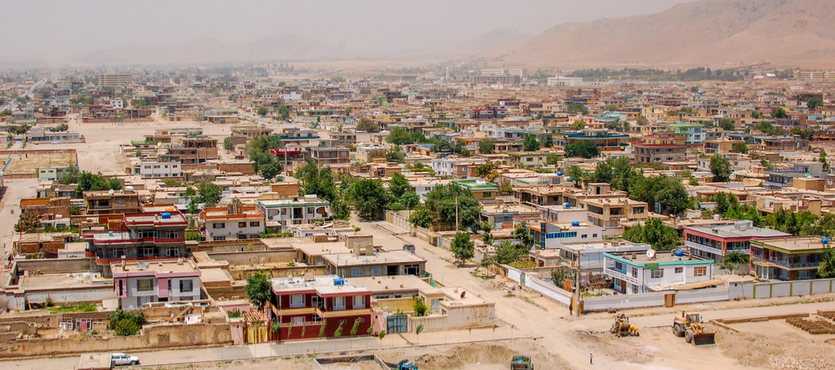Over the last several months, violence has increased significantly in the 17-year war, sparking fears that the conflict may have reached a bloody stalemate.
On November 28, a truck bomb explosion and subsequent firefight in Kabul killed 10 people and injured 19 others. The incident forced the international airport to close. The Taliban quickly claimed responsibility for the attack against “an important base of occupying forces.” This attack came on the heels of an earlier incident in Ghazni. Taliban troops raided a number of villages in this province. Three Americans were among the dead, making the Ghazni raids the deadliest combat incident for Americans this year. About than same time, another Kabul bomb killed about 50 Sunni Muslim clerics. The latest attack came just hours after Afghan President President Ashraf Ghani gave a speech in Geneva outlining his plan for peace. President Ghani has repeatedly said he wants the Taliban to be part of a “democratic and inclusive society.” But aside from a brief cease-fire in the summer of 2018, the Taliban has steadfastly refused to negotiate.
U.S. President Donald Trump noted that the Americans were negotiating with the Taliban, but he did not seem too optimistic. “Maybe they’re not [going to succeed]. Probably they’re not,” he said.
Afghanistan: The First Front in the War on Terror
The United State invaded Afghanistan shortly after 9/11. For years, Osama bin Laden’s al Qaeda terrorist organization had been headquartered there. But the conflict has roots much deeper than that.
The American invasion was just the most recent in a long series of foreign interventions in this Southwest Asian country. In 1979, the Soviet Union invaded Afghanistan to prop up its pro-communist government. Strongman Nur Mohammad Taraki was a Stalinist who executed his political opponents and pursued a series of deeply-unpopular reforms. Rural, conservative Afghans formed the core of the opposition. Sporadic uprisings which began in 1978 soon turned into open rebellion.
At first, superior Soviet manpower and technology overwhelmed the rebels. So, the American CIA encouraged Islamic militants from around the world to fight the infidel Soviets in a jihad (holy war). Some say the turning point in the conflict came in the mid 1980s, when the CIA began supplying Stinger missles to the mujahideen (holy warriors).
The strategy worked. With American arms and money, the mujahideen expelled the exhausted Soviets from Afghanistan. With the Soviet Union on the verge of collapse, Moscow had neither the resources nor the fortitude to pursue a war in Southwest Asia.
U.S. President George H.W. Bush promptly declared victory and pulled U.S. assets out of the country. That seemed like a good idea at the time.
But the Islamic militants in the country no longer had a common enemy. So, the situation in Afghanistan quickly deteriorated. The rebels began fighting each other for control of the country. One of these groups became the ultra-conservative Taliban. Ironically, this group may have been the one that sparked resistance to Taraki and incited the entire conflict in the first place.
By around 1990, the Taliban had consolidated control over much of Afghanistan. Taliban leaders invited Saudi dissident Osama bin Laden into the country to train his private army. Al Qaeda launched a series of escalating attacks against the United States in the 1990s, culminating with the events on September 11, 2001.
Injuries in Afghanistan
Since 2001, over 25,000 American servicemembers and contractors have been killed or injured in Afghanistan. In an anti-insurgency campaign such as this one, danger is everywhere.
The Improvised Explosive Device is responsible for many of these deaths and injuries. Americans have repeatedly upgraded their equipment, mostly their armored vehicles, to guard against IEDs. New roadside bombs, possibly supplied by Iran, regularly arrive to counter these improvements. Trauma injuries are not the only hazard from roadside bombs. Explosive blasts also radiate shock waves that disrupt brain functions, causing Traumatic Brain Injuries.
Suicide bombers are a constant threat, as well. These individuals can easily infiltrate crowds of people and cause mass casualties. The same applies to car and truck bombs.
Finally, there are plenty of firefights in the Afghan war. Efficient American transports quickly pull injured soldiers out of the line of fire and take them to hospitals. But even then, several minutes or hours often elapse between injury and treatment.
Injury Compensation Available
Many enemy actions combine multiple elements. A bomb explosion might be a precursor to a firefight. As a result, many contractors sustain both external and internal injuries. The Defense Base Act provides direct compensation for a full range of medical expenses, including:
- Emergency care,
- Follow up medical care,
- Physical rehabilitation,
- Medical devices,
- Prescription drugs, and
- Other medically-necessary costs.
Direct compensation means the DBA insurance company usually pays these expenses directly and victims are not responsible for any unpaid charges. If the insurance company drags its feet during the settlement process, which is not unusual, a DBA attorney can often arrange for medical treatment with no upfront cost. Usually, providers agree to defer billing until the case is resolved. So, most injured overseas contractors never see medical bills.
Additionally, most victims can choose their own doctors and switch physicians at any time during the course of treatment.
Contact Barnett, Lerner, Karsen, Frankel & Castro P.A. for more information about the procedure in DBA claims.

